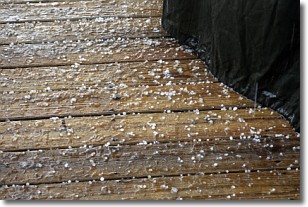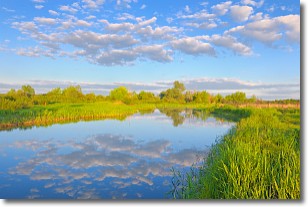Weather Alert in Arizona
Flood Watch issued September 4 at 12:57PM MST until September 5 at 12:00AM MST by NWS Phoenix AZ
AREAS AFFECTED: Aguila Valley; Northwest Valley; Tonopah Desert; Gila Bend; Buckeye/Avondale; Cave Creek/New River; Deer Valley; Central Phoenix; North Phoenix/Glendale; New River Mesa; Scottsdale/Paradise Valley; Rio Verde/Salt River; East Valley; Fountain Hills/East Mesa; South Mountain/Ahwatukee; Southeast Valley/Queen Creek; Superior; Northwest Pinal County; West Pinal County; Apache Junction/Gold Canyon; Tonto Basin; Mazatzal Mountains; Pinal/Superstition Mountains; Sonoran Desert Natl Monument; San Carlos; Dripping Springs; Globe/Miami; Southeast Gila County
DESCRIPTION: * WHAT...Flooding caused by excessive rainfall continues to be possible. * WHERE...A portion of south central Arizona, including the following areas, Aguila Valley, Apache Junction/Gold Canyon, Buckeye/Avondale, Cave Creek/New River, Central Phoenix, Deer Valley, Dripping Springs, East Valley, Fountain Hills/East Mesa, Gila Bend, Globe/Miami, Mazatzal Mountains, New River Mesa, North Phoenix/Glendale, Northwest Pinal County, Northwest Valley, Pinal/Superstition Mountains, Rio Verde/Salt River, San Carlos, Scottsdale/Paradise Valley, Sonoran Desert Natl Monument, South Mountain/Ahwatukee, Southeast Gila County, Southeast Valley/Queen Creek, Superior, Tonopah Desert, Tonto Basin and West Pinal County. * WHEN...Until midnight MST tonight. * IMPACTS...Excessive runoff may result in flooding of rivers, creeks, streams, and other low-lying and flood-prone locations. Low-water crossings may be flooded. * ADDITIONAL DETAILS... - High atmospheric moisture content in combination with slow moving showers and thunderstorms may result in heavy rainfall and flooding in the watch area. - http://www.weather.gov/safety/flood
INSTRUCTION: You should monitor later forecasts and be alert for possible Flood Warnings. Those living in areas prone to flooding should be prepared to take action should flooding develop.
Want more detail? Get the Complete 7 Day and Night Detailed Forecast!
Current U.S. National Radar--Current
The Current National Weather Radar is shown below with a UTC Time (subtract 5 hours from UTC to get Eastern Time).

National Weather Forecast--Current
The Current National Weather Forecast and National Weather Map are shown below.

National Weather Forecast for Tomorrow
Tomorrow National Weather Forecast and Tomorrow National Weather Map are show below.

North America Water Vapor (Moisture)
This map shows recent moisture content over North America. Bright and colored areas show high moisture (ie, clouds); brown indicates very little moisture present; black indicates no moisture.

Weather Topic: What is Sleet?
Home - Education - Precipitation - Sleet
 Next Topic: Snow
Next Topic: Snow
Sleet is a form of precipitation in which small ice pellets are the primary
components. These ice pellets are smaller and more translucent than hailstones,
and harder than graupel. Sleet is caused by specific atmospheric conditions and
therefore typically doesn't last for extended periods of time.
The condition which leads to sleet formation requires a warmer body of air to be
wedged in between two sub-freezing bodies of air. When snow falls through a warmer
layer of air it melts, and as it falls through the next sub-freezing body of air
it freezes again, forming ice pellets known as sleet. In some cases, water
droplets don't have time to freeze before reaching the surface and the result is
freezing rain.
Next Topic: Snow
Weather Topic: What are Stratocumulus Clouds?
Home - Education - Cloud Types - Stratocumulus Clouds
 Next Topic: Stratus Clouds
Next Topic: Stratus Clouds
Stratocumulus clouds are similar to altocumulus clouds in their
fluffy appearance, but have a slightly darker shade due to their additional mass.
A good way to distinguish the two cloud types is to hold your hand out and measure
the size of an individual cloud; if it is the size of your thumb it is generally
an altocumulus cloud, if it is the size of your hand it is generally a
stratocumulus cloud.
It is uncommon for stratocumulus clouds to produce precipitation, but if they do
it is usually a light rain or snow.
Next Topic: Stratus Clouds
Current conditions powered by WeatherAPI.com




